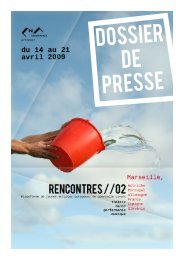Laravel Starter - PHP User Group (Myanmar)
Laravel Starter - PHP User Group (Myanmar)
Laravel Starter - PHP User Group (Myanmar)
You also want an ePaper? Increase the reach of your titles
YUMPU automatically turns print PDFs into web optimized ePapers that Google loves.
<strong>Laravel</strong> <strong>Starter</strong><br />
Step 17 – Creating the update form with the form helper<br />
Now, we just need to create the update form and we'll have a full administrative system!<br />
Go ahead and create the view at application/views/users/update.blade.php<br />
and fill it with this lovely form:<br />
Update a <strong>User</strong><br />
{{ Form::open() }}<br />
Real Name: {{ Form::text('real_name', $user->real_name) }}<br />
Email: {{ Form::text('email', $user->email) }}<br />
Change Password: {{ Form::password('password') }}<br />
{{ Form::submit('Update <strong>User</strong>') }}<br />
{{ Form::close() }}<br />
This is almost exactly like the create form except that we have mixed things up a little. First of<br />
all, you'll notice that we're using <strong>Laravel</strong>'s Form class helper methods. These helper methods,<br />
like the HTML class' helper methods, are not mandatory. However, they are recommended. They<br />
offer many of the same advantages as the HTML class' helper methods. The Form class' helper<br />
methods offer a unified interface for generating the resulting HTML tags. It's much easier to<br />
programmatically update HTML tag attributes by passing an array as an argument than to loop<br />
through and generate the HTML yourself.<br />
Real Name: {{ Form::text('real_name', $user->real_name) }}<br />
Text fields can be prepopulated by passing in a second argument. In this example, we're passing<br />
the real_name attribute from the user object that we passed from the controller. We then<br />
prepopulate the email field in the same way.<br />
Change Password: {{ Form::password('password') }}<br />
Notice that we're not prepopulating the password field. It doesn't make sense to do so as<br />
we're not storing a readable version of the password in the database. Not only that, to prevent<br />
a developer from making a mistake the Form::password() method does not have the<br />
functionality to prepopulate this field at all.<br />
And with that we have a fully working update user form!<br />
26




